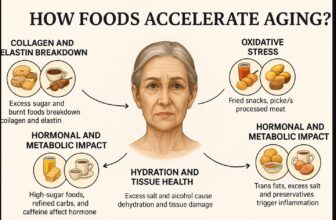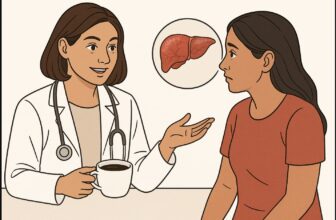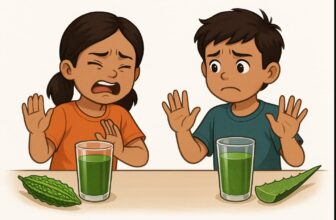Breakfast feels like a safe meal. You pour milk, toast bread, or add a health drink, confident that you’re starting your child’s day right. But many breakfast choices in India contain more hidden sugar than dessert.
From cereals to packaged juice, sugar often enters your child’s system before school, even begins without you realizing it. And it doesn’t always go by the name “sugar” on the label.
Let’s look at 13 everyday breakfast items that seem healthy but often aren’t, especially for growing kids.
1. Flavoured Breakfast Cereals
That chocolate-flavoured or honey-dipped cereal can contain 9-13 grams of sugar in a small serving. Even “multigrain” versions often use syrup or malt extract for flavour.
- Choose plain cornflakes or oats and sweeten naturally with banana or raisins.
2. Health Drink Powders
Bournvita, Horlicks, Complan these brands are household names. But 2 spoons mixed into milk can add up to 15 grams of sugar. Labels might say “malt-based” or “enhanced nutrition,” but sugar is often the second-highest ingredient.
- Try warm milk with crushed almonds, turmeric, or soaked dates instead.
3. Flavoured Yogurt Cups
A small 100g cup of mango or strawberry yogurt can hold 12-15g of sugar. That’s half the daily safe limit for a child before school even starts.
- Use homemade curd with real fruit or a pinch of cardamom.
4. Bread with Sweet Toppings (Jam, Cheese Spreads)
Even white or brown bread contains 3-4g of sugar per slice. When paired with jam (often over 50% sugar) or processed cheese spreads with added glucose, breakfast quickly resembles a dessert.
- Try hung curd with herbs, peanut chutney, or butter with lemon and salt.
5. Packaged Fruit Juices
Tropicana, Real, Paper Boat most claim to be “natural” or “real fruit.” But a 200ml pack may contain 20-25g of sugar. Juice concentrates and fruit pulp still spike blood sugar, especially without fibre.
- Offer whole fruit or coconut water instead.
6. Flavoured Instant Oats
Sachets with flavours like apple-cinnamon or masala may contain 8-10g of sugar in a single serve. It’s often added under names like maltodextrin or fruit solids.
- Cook plain oats with chopped fruit, jaggery, or grated coconut.
7. Protein and Energy Bars
Often packed into school bags as a healthy snack, these bars can contain 7-14g of sugar from dates, syrup, or honey. They’re convenient but closer to sweet treats than breakfast.
- Offer dry fruit laddoos or a boiled egg with roasted chana.
8. Tea or Coffee With Condensed Milk
One spoon of condensed milk contains around 8g of sugar. It’s a staple in southern coffee and sometimes in children’s chai.
- Reduce the quantity slowly or switch to plain milk-based drinks.
9. Instant Idli or Dosa Mixes
Some branded mixes contain malt extract or dextrose to improve texture and fermentation. The sugar quantity may be small, but it adds up when served with store-bought sauces or ketchup.
- Opt for homemade batter or check labels for fewer additives.
10. Peanut Butter With Flavours
“Chocolate” or “honey” versions of peanut butter can contain 10-12g sugar per spoon. Labels often list added sugar low in the order but it still matters in daily use.
- Stick to plain, unsweetened peanut butter and pair it with fruit slices.
11. Granola and Muesli
Branded muesli or granola can seem premium and healthy but may include candied fruit, honey-coated oats, and sugar syrup. A 45g bowl could hide 12-15g sugar.
- Mix plain oats, dry fruits, and nuts at home to keep it real.
12. Flavoured Milk and Milkshakes
Packaged drinks like Amul Kool or Hershey’s often contain 12-16g sugar per 200ml. They’re tasty, but they’re closer to dessert than to nutritious milk.
- Blend milk with banana, soaked figs, or dry ginger at home.
13. Premade Pancake or Waffle Mixes
Weekend pancakes from a box often contain sugar in the base mix. Add syrup, chocolate, or jam and you’re looking at 20g or more per serving.
- Use whole wheat flour, jaggery, and fresh fruit toppings for a better version.
Why This is Important for Growing Kids?
A sugary start in the morning affects your child’s energy, focus, and appetite for the rest of the day. Over time, it can lead to:
- Mid-morning tiredness or irritability
- Increased cravings for sweets later in the day
- Greater risk of early insulin resistance
- Weight imbalances or slower physical growth
- Dental sensitivity or early tooth decay
Many parents miss the connection between breakfast sugar and these everyday issues.
How You Can Start Making a Change
You don’t need a full kitchen overhaul. These three small steps can make a big breakfast difference:
1. Replace One Sugary Item
Instead of flavoured yogurt, try plain curd + banana – Replace health drink powders with turmeric milk
2. Read Ingredient Labels
Look for: glucose, fructose, malt extract, dextrose, syrup, concentrate – Aim for less than 5g sugar per 100g in everyday products
3. Build a 3-Day Low-Sugar Rotation
Day 1: Idli + coconut chutney + haldi milk
Day 2: Poha + plain dahi
Day 3: Besan chilla + coconut water or plain lassi
Summary – A Sugar Free Breakfast Leads to a Better Day
The first meal your child eats isn’t just food it’s a foundation. Reducing sugar at breakfast helps them focus, learn, and grow with fewer crashes and cravings.
Even one small change makes a difference. And the sooner you start, the more your child’s body and brain will improve.





